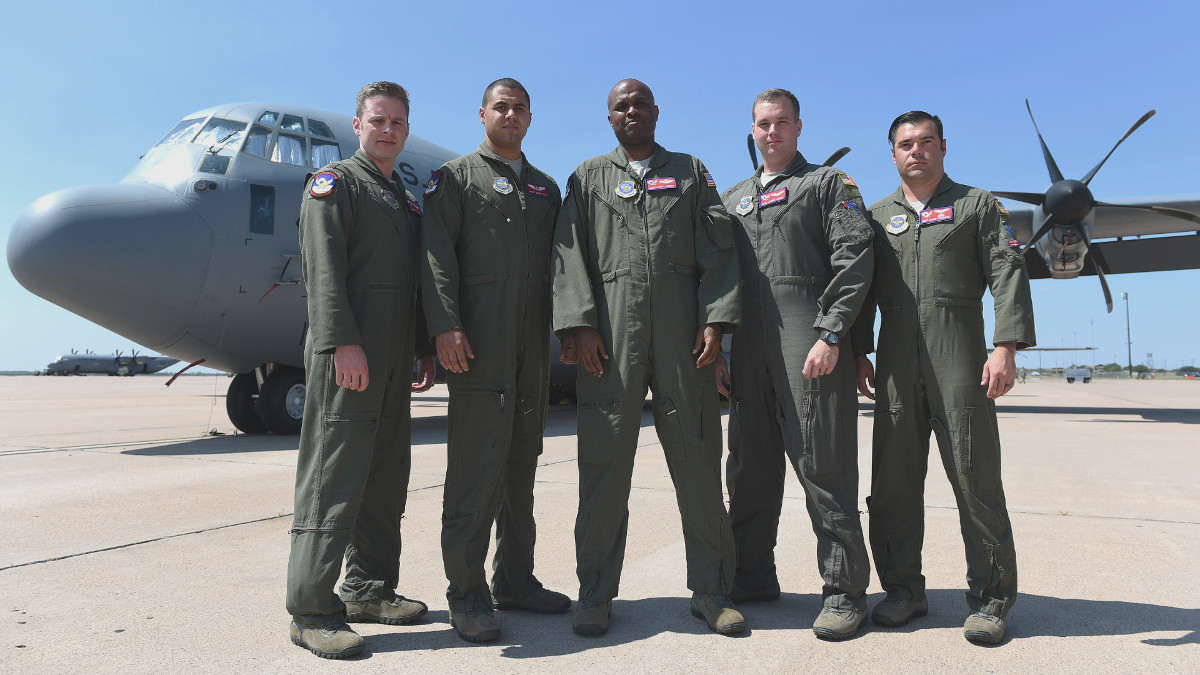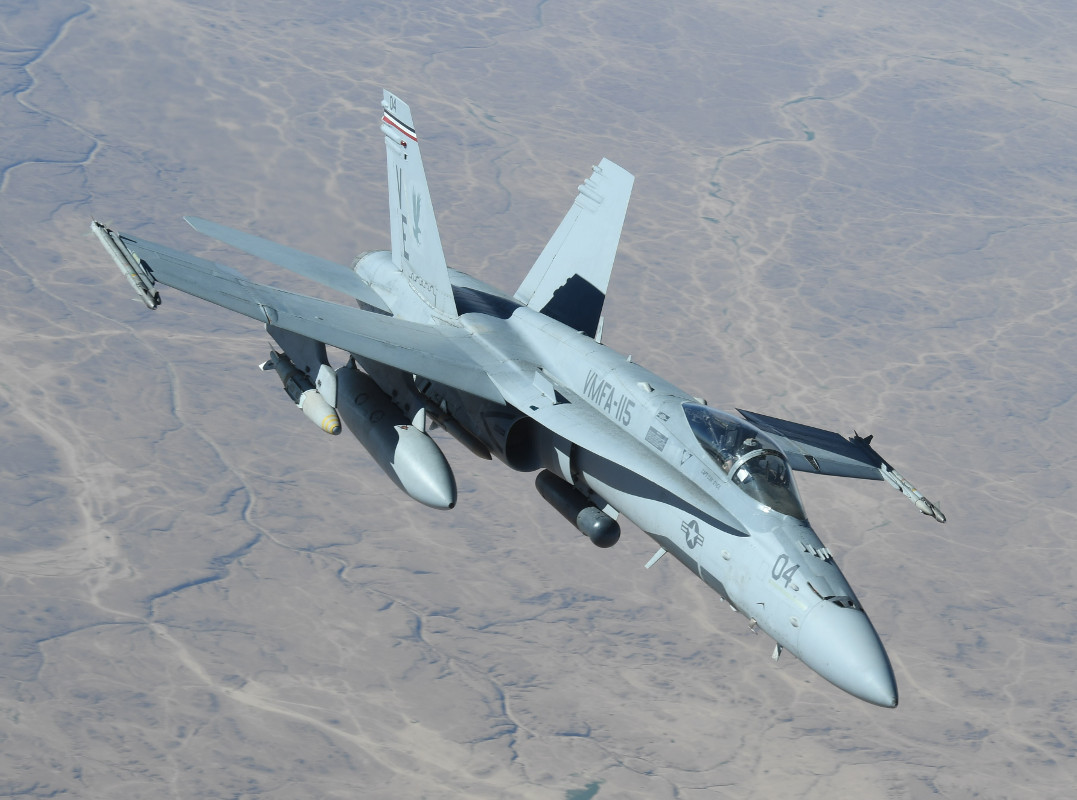In July 2016, three U.S. Air Force C-130J Hercules cargo planes raced south from Camp Lemonnier in the East African country of Djibouti to help members of the U.S. Embassy in South Sudan evacuate the country. Now, documents we’ve obtained describe a dangerous mission where crews dodged potentially hostile air defenses without appropriate countermeasures, battled aircraft trouble before and during the mission, and rescued two people with life-threatening conditions and dozens more after taking off under hostile fire. These new details stand in contrast to the muted information that was available at the time and offers a window into the complexities and risks inherent to these types of operations.
President Barack Obama himself directed the U.S. military to provide support to the American embassy in the South Sudanese capital Juba amid a worrying spike in violence in the country that had led to dozens of deaths, including a Chinese peacekeeper. The trio of C-130J aircraft assigned to the 75th Expeditionary Airlift Squadron – using the call signs Lion 592, 593, and 594 – subsequently brought in more than 30 special operators, including U.S. Army Special Forces, U.S. Navy SEALs, and at least one Air Force Special Operations Command Joint Terminal Air Controller, along with their equipment. This personnel provided command and control on the ground, local security, and escorted almost 30 American citizens to safety in neighboring Uganda.
“The details of the overall mission and situation in South Sudan at the time were very limited,” U.S. Air Force Major Stumpf, who was head of the 75th at the time, said in an interview in 2017. ”We basically had 12 hours to wrap our head around what was going on before we launched the next morning.”
The country was, and remains, in the throes of a brutal civil war that erupted in 2013. Since then, thousands of civilians have died in the fighting and millions more have fled their homes or the country entirely.

The aircraft and crews who flew the July 2016 mission actually came from the 39th Airlift Squadron, which is based at Dyess Air Force Base in Texas, which provided the manpower to the 75th Expeditionary Airlift Squadron in Djibouti at the time. The 16 officers and airmen subsequently received the 2017 General James H. Doolittle Trophy, which Air Mobility Command awards each year to an individual or individuals within the command who demonstrate “extremely meritorious service, professionalism, courage and leadership.” We at The War Zone recently obtained the complete award citation and supporting information via the Freedom of Information Act.
The nomination packet makes it clear that the eight-hour flight from Camp Lemmonier to Juba International Airport was anything but a cakewalk. It was also the first time the U.S. military had ever initiated this type of mission as part of Operation New Normal, a broad crisis response plan that came into being after the infamous attack on the U.S. Consulate in Benghazi, Libya in 2012.

As Stumpf and other American commanders put together the actual plan, maintenance personnel hustled to get the C-130s ready to go. Ground crews identified and then fixed a dozen mission-critical “red ball” problems before the planes actually set out on the mission. At least three of these were directly related to the engines on one or more of the planes, according to the award documents.
The special operators were the ones to actually wake up the aircrews, just seven hours before the mission launched. Together, they “worked out last-min[ute] load plan in bedroom,” the nomination information noted.
The video below shows special operators in pickup trucks and motorcycles training with the 75th Expeditionary Airlift Squadron in 2017.

Problems with the aircraft persisted in flight. Having agreed to fly aircraft with “degraded electric sys[tems],” the crews had to fly around certain weather patterns rather than through them, the award packet explained. Personnel onboard Lion 592 also had to rewire the plane’s satellite communications system in the air – reportedly the first time any U.S. Air Force C-130 crew had ever attempted to do this – to get all three aircraft on the same secure channel.
But even if the Hercules had not had any issues, the mission would have been risky. At that time, the U.S. government considered Juba to be an active war zone and worried the airport might be under rebel control. On July 11, 2016, government and insurgent forces had fought each other close by using tanks and other heavy weapons.
There were also concerns about whether South Sudanese president Salva Kiir was exercising complete control over his own forces, including those in charge of various anti-aircraft weapons. Between 2015 and 2016, the Sudanese People’s Liberation Army, the formal title of the country’s military, acquired Russian-made S-125 radar-guided surface-to-air missiles and Chinese QW-2 man-portable shoulder-fired infrared-guided types.
These weapons posed a very real danger to the low-and-slow flying C-130s. The crews did not have access to chaffs for their countermeasures dispensers at the time. Their planes also lacked directional infrared countermeasures systems, or DIRCM, that have been increasingly common on Hercules operating in high-risk areas to defeat smaller, shorter-range infrared-guided missiles.
Even heavy machine guns and rocket-propelled grenades could have posed a serious threat, especially as the aircraft came in to land in Juba. The Air Force was well aware of this danger from a previous non-combatant evacuation operation into South Sudan in 2013.

During that mission, three Air Force CV-22 Osprey tilt-rotors had to abort an attempt to rescue American citizens trapped in the South Sudanese city of Bor after coming under fire from small arms and rockets from either government troops or rebel forces. All of the aircraft suffered serious damage and some of the U.S. Navy SEALs on board nearly died as bullets and shrapnel pierced the sides of the fuselage.
With these concerns in mind, the C-130s followed a circuitous route so they could try to avoid 13 known anti-aircraft sites. The planes also zipped into South Sudan at extremely low-level under radio silence to give any potential hostile forces the least amount of time to react.
Once on the ground, special operators seized control of the control tower at the airport within three minutes. Other personnel had started unloading vehicles within 20 seconds and were soon moving toward the embassy. When a Joint Tactical Air Controller assigned to the response team lost contact with friendly forces, the crew of Lion 594 took over those duties, using their onboard communications systems to direct unspecified intelligence, surveillance, and reconnaissance aircraft into position to monitor the convoy’s progress. These might have been small manned types the U.S. military had and still has in Uganda, but if that was the case, those aircraft could have been similarly at risk from South Sudanese missiles.
The individuals from the 75th also coordinated with a total of six F/A-18 Hornets from an unknown unit – possibly part of the U.S. Marine Corps’ own Africa-focused crisis response task force – that flew overhead during the mission. These aircraft were fully loaded and on station to provide close air support for the evacuation convoy or the personnel coordinating the operation from the airport if necessary.

“When they [the evacuees] came to the plane, you could clearly see they were distressed and tired,” U.S. Air Force Staff Sergeant James Hurst, a 39th Airlift Squadron loadmaster who took part the mission, said after he and the others received the Doolittle Trophy in 2017. “As they got closer, they became more relieved. Once they put their bags on the ground and sat down, they were feeling a lot more at ease.”
What the U.S. military didn’t say in 2016, or after the C-130 crews go their awards the following year, was that two of the individuals had life-threatening illnesses or injuries. The nomination documents describe the subsequent flight to Uganda as, at least in part, a medical evacuation mission that saved their lives.
Unknown forces on the ground also fired on the aircraft with small arms as they took off, requiring the pilots to take evasive action. We don’t know if any of the planes took any damage. There are no reports of any injuries during the mission itself and all 29 evacuees eventually returned safely to the United States.
After returning to Djibouti, the rescue force also coordinated with U.S. Marine Corps personnel, who initiated a broader crisis response mission, nicknamed Operation Oaken Steel, on July 12, 2016. That operation wrapped up in January 2017.

Though daring and successful, the July 2016 rescue mission underscores just how complicated these types of short-notice operations are even in situations where the United States is not at war with the country in question. Since 2016, we have seen numerous additional examples of how difficult casualty evacuation and other personnel recovery missions can be, especially in Africa as a whole, where small units of U.S. military personnel are positioned in various remote and austere locations detached from traditional support architecture.
The high-profile incident in Niger in October 2017, which led to the death of four members of the U.S. Army, made these issues a topic of national discussion. However, as this new information shows, it was hardly the first time the U.S. military has struggled with these challenges.
Just on Aug. 8, 2018, the Department of Defense’s Inspector General announced it would be looking into whether the Marine Corps’ crisis response task force for Africa is actually capable of performing that mission adequately. At an event that the National Defense Industry Association hosted in March 2018, Peter Tiel, the U.S. Africa Command (AFRICOM) Science Advisor explained that increasing personnel capability on the continent was the command’s top priority for the next five years.
In his briefing, Tiel also disclosed that only one in three requests for casualty evacuation or personnel recovery capability within AFRICOM gets sourced. Contracts, worth nearly $50 million annually, to have private companies provide additional support in Niger and Somalia “narrows the gap,” but clearly leaves significant room for improvement. The U.S. military has been experiencing similar shortfalls outside of Africa, including in Yemen and elsewhere.

The U.S. military’s experience in 2016 in South Sudan also continues to point out how difficult personnel recovery missions are in combat situations
and non-combatant evacuation operations in general. And if this is how things look when the U.S. military had to rush to a rescue in a country such as South Sudan, where the threats were comparatively limited, just imagine how things might look during a conflict in or near a country with far more robust capabilities.
There have been concerns, for instance, about how quickly the United States could realistically get government personnel and other U.S. citizens out of South Korea during a major crisis with the North. The U.S. military will increasingly be forced to find ways to mitigate the danger from advanced air defense and other threats, not just to protect American military personnel during combat operations, but also when considering how to evacuate civilians swept up in violent crises.
In the meantime, the United States will have to rely heavily on the leadership, courage, creativity, and professionalism of its existing forces to conduct these dangerous missions.
Contact the author: jtrevithickpr@gmail.com
